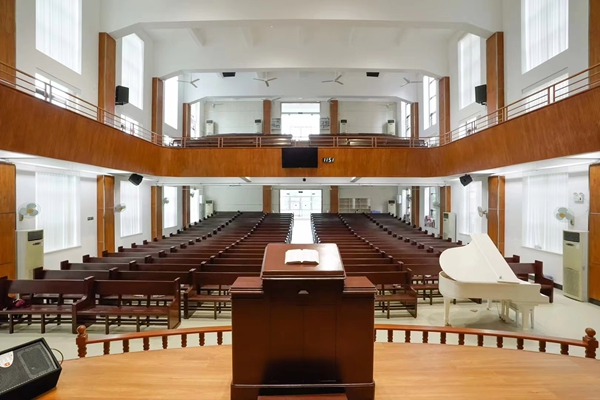The Shangdu Christian Church of Fuzhou is located on the south bank of the Minjiang River in Youxi Islanbyan, Fuzhou. Historically, the woods felled in northern Fujian were transported through the water along the Minjiang River by wood deliverers who tied the woods into wooden "boats." In the Minjiang River, they fight the wind and waves and "go with the tide" by following the flow of the river. These woods would be gathered on the docks of the Minjiang River in Shangdu, Fuzhou, and then roughly processed and sold to the people of the province and abroad. After the woods were delivered to the Shangdu timber storage yard, the deliverers went ashore to live in shacks made of wood, and Shangdu was one of the poorest areas in Fuzhou...
More than a hundred years ago, Christianity was introduced to Fuzhou, and in 1921, the Methodist Episcopal Church built a church named Fumin Church in Shangdu, Fuzhou. Most of its believers were wood deliverers who lived in Shangdu. Fumin Church was a two-story building with a brick-and-wood structure. This church was near the river with a low elevation, and the church was often flooded. It was reopened in 1984 as the Shangdu Christian Church. In 1994, the number of believers grew to 800.
In 2000, the century-old Fumin Church was on the verge of collapse and needed reconstruction. After the reconstruction in 2000, the construction area of Fumin Church reached 1500 square meters, and the Minjiang River never flooded into the church.
According to Ouyang Shuping, the pastor of Shangdu Christian Church, the interior decoration of the church after its completion was all designed, decorated, and dedicated by the brothers and sisters of the church.
At present, there are more than 1,000 people at each Sunday meeting in the Shangdu Church, and the church has to add more chairs when the church holds gatherings every weekend. Besides overseeing the pastoral care of nine subordinate meeting points, the three preachers and one pastor of Shangdu Church are involved in visiting the disabled, alleviating poverty, providing disaster relief, and serving the community.
-Translated by Nicolas Cao











